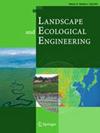Quantitative evaluation of forest communities and effects of oak wilt in a secondary forest in western Japan
IF 1.9
4区 环境科学与生态学
Q2 BIODIVERSITY CONSERVATION
引用次数: 0
Abstract
Abstract In Japan, secondary forests associated with agriculture (satoyama) had been maintained traditionally by small-scale clearcutting and short-rotation coppice forestry. After forest management was discontinued due to modernization, shade-intolerant, deciduous trees such as Q. serrata and Q. variabilis have become dominant in many secondary forests of southwestern Japan. In recent years, however, tree death from Japanese oak wilt has become wide-spread. To identify forest communities that will be most affected by oak wilt, we investigated stand structure and species composition in a 64-ha unmanaged secondary forest in Kobe, Japan. We identified three forest communities using cluster analysis of 27 survey plots. We then analyzed and visualized vegetation similarity among the communities using non-metric multidimensional scaling (nMDS). In secondary forests, Pinus densiflora – Rhododendron macrosepalum and Quercus serrata – Quercus variabilis communities, which established after pine wilt were identified. We also found communities dominated by Cryptomeria japonica , a plantation species. We predicted that Quercus serrata – Quercus variabilis communities will experience significant vegetation change after oak wilt and become low-statured, evergreen-deciduous forests. These communities, therefore, should be prioritized for active management by small-scale clear cutting to prevent further spread of oak wilt and subsequent biodiversity decline.

日本西部某次生林栎树枯萎病的定量评价及影响
在日本,与农业相关的次生林(satoyama)传统上是通过小规模的采伐和短轮伐的灌木林来维持的。在森林管理因现代化而中断后,日本西南部的许多次生林中,不耐阴的落叶乔木,如锯齿栎(Q. serrata)和变异栎(Q. variabilis)已成为优势。然而,近年来,日本橡树枯萎病造成的树木死亡已经变得普遍。为了确定受栎枯萎病影响最大的森林群落,我们对日本神户64公顷的天然林的林分结构和物种组成进行了调查。通过对27个样地的聚类分析,确定了3个森林群落。利用非度量多维尺度(nMDS)对群落间植被相似性进行分析和可视化。在次生林中,发现了松林枯萎后形成的密松-大裂杜鹃群落和锯齿栎-变栎群落。我们还发现了以人工林树种Cryptomeria japonica为主的群落。我们预测,在栎树枯萎后,锯齿栎-变异栎群落将经历显著的植被变化,成为矮小的常绿落叶林。因此,这些群落应优先进行积极管理,通过小规模的砍伐,以防止橡树枯萎病的进一步蔓延和随后的生物多样性下降。
本文章由计算机程序翻译,如有差异,请以英文原文为准。
求助全文
约1分钟内获得全文
求助全文
来源期刊

Landscape and Ecological Engineering
BIODIVERSITY CONSERVATION-ECOLOGY
CiteScore
3.50
自引率
5.00%
发文量
41
审稿时长
>12 weeks
期刊介绍:
Landscape and Ecological Engineering is published by the International Consortium of Landscape and Ecological Engineering (ICLEE) in the interests of protecting and improving the environment in the face of biodiversity loss, desertification, global warming, and other environmental conditions.
The journal invites original papers, reports, reviews and technical notes on all aspects of conservation, restoration, and management of ecosystems. It is not limited to purely scientific approaches, but welcomes technological and design approaches that provide useful and practical solutions to today''s environmental problems. The journal''s coverage is relevant to universities and research institutes, while its emphasis on the practical application of research will be important to all decision makers dealing with landscape planning and management problems.
 求助内容:
求助内容: 应助结果提醒方式:
应助结果提醒方式:


